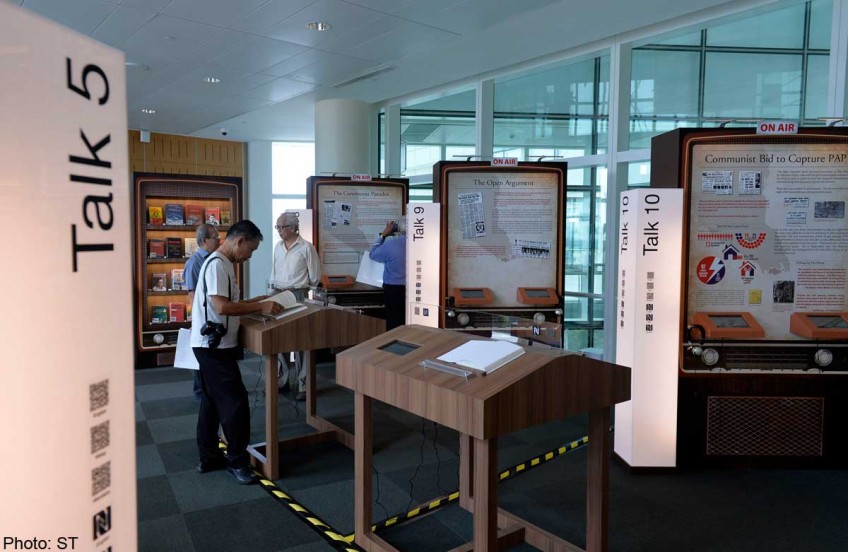Merger exhibition fills in the blanks

GRANDMA Seng Geok Chern has hardly any memory of the 1961-62 battle for merger. A 15-year-old student then, her most vivid memory of the 1960s is the race riots in 1964 and Singapore's ejection from Malaysia the following year.
But yesterday, as the 68-year-old accompanied her grandson, Ryan Seah, 15, to The Battle For Merger exhibition in the National Library building, she realised the significance of Mr Lee Kuan Yew's radio talks in 1961.
"This chart I saw showed neighbouring countries such as Vietnam and Laos being dominated by communists. Without Mr Lee's broadcasts, Singapore could have been like them if the communists had won," she told The Straits Times.
Added Ryan: "I now understand the full threat of the communists and how different Singapore would have turned out if the Barisan Sosialis had become the government," said the Secondary 3 student.
"My history textbook said Tunku Abdul Rahman (then Prime Minister of Malaya) and Mr Lee were excited about merging because they thought it would be mutually beneficial. I learnt today it was also because they were united against a common enemy."
The exhibition accompanies the reprint of The Battle For Merger book, a collection of 12 radio talks Mr Lee gave to win Singaporeans over to form a union with Malaysia. But central to the talks was his exposure of the communist threat and their goal to capture power in Singapore.
Retiree Chua Yong Ann, 75, however, recalled not being convinced by Mr Lee. He was then aged 22.
"The terms he negotiated for merger were unequal; Singapore went in on its knees," he said in Mandarin.
"Lim Chin Siong and the others may or may not be communists but they wanted Singapore to enter Malaysia as an equal and with full control of our affairs."
He cast a blank vote at the referendum in September 1962 because he wanted Singapore to be independent, an option not available on the ballot.
"I was part of the 25 per cent that cast a blank vote," he said when interviewed.
"Sure enough, we were kicked out three years later."
The exhibition also rekindled memories of political activism for two retirees who were buddies in secondary school but mostly lost touch with each other until they met again at an alumni event last year.
Mr Andrew Ang, 78, and Mr Chew Ah Hay, 75, were students at the former Chinese High School, where both were PAP volunteers in the lead-up to the 1955 legislative assembly election.
But on the merger issue, when the the duo were in their 20s, they took opposing positions. They realised it years later.
Yesterday, both had a spirited discussion of the events after viewing the exhibition.
Mr Ang agreed with Mr Lee that Singapore could not have survived on its own and compete with Malaysia. Mr Chew, on the other hand, felt merger would be economically disastrous for the Chinese majority who were largely Chinese-educated.
Said Mr Chew in Mandarin: "Mr Lee's broadcasts may have painted Mr Lim Chin Siong and others as communists but to me then, they were fighting for Chinese-educated workers.''
Disagreeing, Mr Ang said: "I saw Singapore as being too small to compete against Malaysia.''
Looking at Singapore now, both agreed Mr Lee just wanted what was best for Singapore's economy and its future.
yanliang@sph.com.sg

Get a copy of The Straits Times or go to straitstimes.com for more stories.